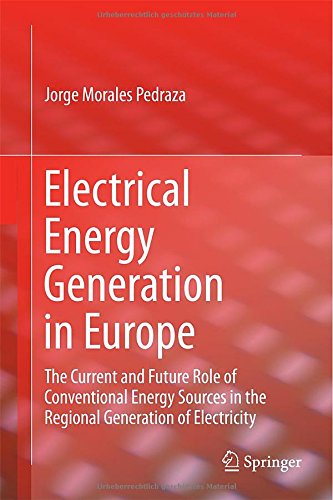

Most ebook files are in PDF format, so you can easily read them using various software such as Foxit Reader or directly on the Google Chrome browser.
Some ebook files are released by publishers in other formats such as .awz, .mobi, .epub, .fb2, etc. You may need to install specific software to read these formats on mobile/PC, such as Calibre.
Please read the tutorial at this link: https://ebookbell.com/faq
We offer FREE conversion to the popular formats you request; however, this may take some time. Therefore, right after payment, please email us, and we will try to provide the service as quickly as possible.
For some exceptional file formats or broken links (if any), please refrain from opening any disputes. Instead, email us first, and we will try to assist within a maximum of 6 hours.
EbookBell Team

4.8
94 reviewsMaximizing reader insights into the current use of conventional energy sources (such as fossil fuels) in the generation of electricity in the European region, this book addresses several key issues including: potential ways European countries could expand their energy sector in the coming years; the impact on the climate, the level of energy reserves, different efficiency measures that could be adopted to reduce the consumption of fossil fuels in the generation of electricity, and current and future energy production and consumption trends, amongst other topics.
Covering both how the use of fossil fuels for the generation of electricity can be reduced, and how to increase the current level of participation of those energy sources with a minimum negative impact on the environment in the energy balance of the different European countries, this book describes the main economic aspects related to the use of conventional energy sources for electricity generation and provides information on possible regional energy integration mechanisms and their potential impact on the generation of electricity.
‘Electrical Energy Generation in Europe’ is designed as a useful tool for government officials, energy experts, and the private and public power industry, among others, during the preparation of future energy plans and in the identification of the possible role that the different types of conventional energy sources available in the region could play in the production of electricity during the coming decades. The book is also suitable for use as teaching material in pre-graduated and post-graduate studies on the use of different types of conventional energy sources for electricity production within different European countries.